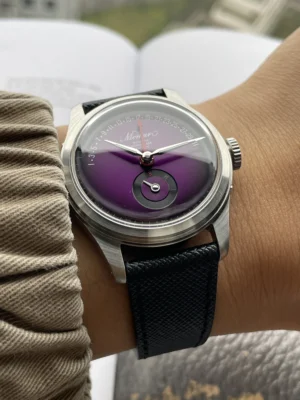Understanding Multi-Timezone Functionality: More Than Just Time Conversion
Multi-timezone functionality represents a sophisticated system that allows users to track, display, and coordinate time across different geographical regions simultaneously. It goes beyond simple time conversion, offering automatic adjustments between time zones, simultaneous display of multiple time zones, and intelligent scheduling that accounts for regional time differences.
What began as basic awareness of time differences has evolved into integrated systems that serve as critical infrastructure for global operations. Modern multi-timezone functionality automates what was once a manual, error-prone process of calculating time differences between locations.
Definition: Multi-timezone functionality is a set of features that enable systems to automatically handle time differences across geographical regions, including time conversion, simultaneous display of multiple time zones, and scheduling that accounts for regional time differences.
The core problem these systems solve is fundamental: bridging geographical time gaps in our increasingly connected world. As businesses and relationships span continents, time has become a form of infrastructure—a framework upon which global operations are built.
This functionality has deep roots in the standardization of time zones in the late 19th century, which established Universal Coordinated Time (UTC) as the standard reference point. While early implementations simply converted times manually, modern systems integrate deeply with calendars, communication tools, and project management platforms.
The difference between basic and sophisticated implementations is striking: while a basic system might simply tell you it’s 3 PM in Tokyo when it’s 9 AM in London, advanced systems can automatically schedule a meeting at mutually convenient times, adjust deadlines across teams, and even optimize global workflows based on working hours across regions. The historical development of timekeeping technology shows just how far we’ve come in addressing these challenges.
Why Multi-Timezone Capability Has Become Non-Negotiable Today
In today’s interconnected world, multi-timezone capability has rapidly shifted from a luxury to an absolute necessity. This transformation has been driven by several powerful trends that continue to reshape how we work and connect globally.
The acceleration of globalization has fundamentally altered daily business operations. Companies no longer operate within the confines of single time zones—they serve clients, manage supply chains, and coordinate teams across continents. This expansion has created an urgent need for tools that bridge time differences efficiently.
Key Statistic: Over 70% of businesses now operate across multiple time zones, with the average enterprise spanning at least 3 different time regions.
The dramatic rise of distributed workforces has further cemented this necessity. Remote work has expanded talent pools globally, with teams collaborating across vast geographical distances. This shift demands sophisticated time management tools that prevent confusion and maintain productivity.
The costs of time-related errors have also become increasingly apparent. Missed meetings, delayed responses, and confusion about deadlines can damage client relationships, slow project timelines, and create costly miscommunications. In high-stakes industries, these errors can translate to significant financial losses.
Today’s expectation for “always-on” service further requires sophisticated time zone awareness. Customers expect prompt responses regardless of where they’re located relative to service providers. Understanding the underlying functionality of GMT features helps organizations meet these expectations seamlessly.
As these trends continue to strengthen, the ability to efficiently navigate multiple time zones has become a competitive advantage—and the lack of this capability an increasingly serious liability.
Seven Core Benefits of Multi-Timezone Functionality
Enhanced Productivity: Eliminating manual time calculations frees up mental energy and reduces the cognitive load on team members. Instead of constantly performing mental mathematics to determine “what time is it there?”, professionals can focus on their core responsibilities. One study found that employees save an average of 30 minutes per week when using automated time zone tools.
Improved Collaboration: When teams spread across continents can seamlessly coordinate, collaboration thrives. Multi-timezone functionality creates a common temporal framework that allows team members in Tokyo, London, and San Francisco to align their efforts without confusion. This leads to smoother project handoffs and more cohesive teamwork.
Reduced Errors: Time zone confusion leads to scheduling conflicts, missed meetings, and deadline misunderstandings. Proper multi-timezone tools minimize these errors by providing clear, consistent time references. One global consulting firm reported a 70% reduction in scheduling errors after implementing comprehensive time zone management.
Better Communication: Knowing when colleagues or clients are available ensures timely interactions. This awareness helps prevent the frustration of late-night emergency calls or missed opportunities due to time misalignment. Communication becomes more respectful and effective when time zones are properly considered.
Increased Efficiency: Organizations can optimize resource allocation and project timelines when they understand the temporal landscape they operate within. Global teams can implement “follow-the-sun” workflows, where progress continues around the clock as different regions pick up where others leave off.
Superior User Experience: For businesses serving global audiences, time zone awareness creates a more personalized experience. Notifications, updates, and communications arrive at appropriate local times rather than the middle of the night, showing respect for customers’ schedules.
Wider Talent Access: Organizations can effectively recruit and manage international team members when they have systems to handle time differences. This opens up global talent pools and allows businesses to build diverse teams with specialized expertise regardless of location.

These benefits become particularly apparent when comparing before-and-after scenarios. Before implementing multi-timezone functionality, a global marketing agency spent roughly 5-10 hours per campaign just coordinating launch times. After implementation, that time dropped to less than an hour, while also reducing timing errors by 90%.
For professionals who frequently travel or coordinate across regions, specialized GMT automatic watches provide a physical manifestation of this functionality, allowing at-a-glance awareness of multiple time zones even away from digital devices.
Business Applications: How Organizations Leverage Multi-Timezone Features
Global Team Coordination and Management
Meeting Scheduling Across Continents: Advanced calendar systems that automatically suggest optimal meeting times in the overlap of working hours between regions. This eliminates the back-and-forth that typically plagues international scheduling.
24/7 Operational Handoffs: Structured processes for teams in different regions to transfer ongoing work at the end of their workday to colleagues just starting theirs. These handoffs ensure continuous progress on critical projects.
“Follow the Sun” Models: Development and support teams strategically positioned around the world to provide continuous service or progress. When Tokyo’s team ends their day, London picks up, followed by New York, creating a cycle of constant productivity.
A software development company implemented this model with teams in Singapore, Poland, and Brazil, achieving a 40% reduction in project delivery times while maintaining consistent code quality through careful handoff protocols.
International Client and Partner Relationship Management
Scheduling Sales Calls and Demonstrations: Tools that suggest meeting times that respect both parties’ working hours, with clear display of multiple time zones to prevent confusion.
Support Timing and Availability: Automated systems that route customer inquiries to available support staff regardless of where they’re located, ensuring prompt resolution.
Contract and Deliverable Timing: Clear frameworks for specifying deadlines across time zones, often defaulting to UTC to avoid ambiguity about when deliverables are due.
Global Events and Marketing Coordination
Simultaneous Product Launches: Carefully orchestrated releases that happen at equivalent local times across different markets, creating global excitement while respecting regional timing preferences.
Time-Optimized Campaigns: Email and social media scheduling that delivers content at the optimal local time for each region, maximizing engagement rather than sending all communications based on headquarters’ time zone.
Webinar and Virtual Event Scheduling: Strategic timing of online events with multiple sessions to accommodate different regions, often with recordings available for those who cannot attend live.
Customer Service and Support Applications
Queue Management Across Time Zones: Intelligent routing systems that direct customer inquiries to available agents regardless of location, balancing workloads across global support teams.
Shift Planning for Global Coverage: Carefully designed shift patterns that ensure customer support availability 24/7 without requiring any individual team to consistently work undesirable hours.
Response Time Management: SLA (Service Level Agreement) systems that account for time zones when calculating appropriate response times, avoiding penalizing teams for delays that occur outside business hours.
Organizations that travel across regions or coordinate global operations often equip key team members with GMT dive watches that allow tracking multiple time zones even in challenging environments or when digital devices aren’t practical.
Technical Implementation: Multi-Timezone Functionality in Software and Systems
Implementing multi-timezone functionality in software systems requires careful consideration of several technical challenges. At the foundation is proper timestamp handling and storage. Best practice dictates storing all timestamps in UTC (Coordinated Universal Time) in databases, then converting to local time only for display purposes. This approach avoids ambiguity and ensures consistent data regardless of where users are located.
Time zone conversion algorithms must account for numerous complexities beyond simple hour differences. These include:
// Conceptual example - not actual code
function convertTime(utcTimestamp, targetTimezone) {
// Account for basic hour offset
// Handle daylight saving time
// Consider historical time zone changes
// Process special cases and anomalies
return localTimestamp;
}
Database considerations become particularly important for applications serving global users. Beyond UTC storage, databases need indexing strategies that efficiently handle time-based queries across different user time zones. This prevents performance degradation when filtering records by date ranges that span time zone boundaries.
One of the most challenging aspects is handling Daylight Saving Time (DST) transitions. These seasonal time changes don’t occur on the same dates globally, and some regions don’t observe them at all. Robust systems must maintain an updated time zone database that tracks these changing rules by region.
User interface design for time display requires thoughtful approaches. Effective interfaces clearly indicate which time zone is being displayed, offer easy toggling between local and other relevant time zones, and provide visual cues to highlight working hours overlap between regions.
A common pitfall occurs when systems assume all days have 24 hours, overlooking the 23 or 25-hour days that occur during DST transitions. Another frequent error involves treating time zone abbreviations (like EST) as unique identifiers, when in fact they can be ambiguous.
The technical evolution of timezone tracking shows remarkable parallels between mechanical watches and digital systems, with both requiring sophisticated mechanisms to account for these temporal complexities.
Personal and Social Applications of Multi-Timezone Features
Beyond business environments, multi-timezone functionality offers valuable benefits for personal and social connections across geographical boundaries:
- International Family and Friend Connections
- Coordinating calls and virtual gatherings becomes simpler with tools that show mutual available times across different time zones, eliminating the need for mental calculations.
Remembering birthdays and special events across time zones prevents the embarrassment of sending greetings a day late or early because of time differences.
Global Travel Planning and Management
- Flight and accommodation scheduling tools that clearly show departure and arrival times in both local and home time zones help prevent confusion when crossing multiple time zones.
Itinerary management applications that display activities in both destination local time and home time help travelers maintain awareness of both schedules.
Remote Work for Individuals
- Freelancers and independent contractors can manage client relationships across time zones with calendars that clearly display client availability and appropriate contact hours.
Setting boundaries becomes easier with automated status indicators that show working hours across different regions, preventing intrusions during personal time.
Online Communities and Gaming
- Event scheduling for global participants can automatically suggest times that accommodate the most members across different regions.
- Tournament and competition management across time zones ensures fair participation opportunities regardless of participant location.

For frequent travelers and those with regular international connections, specialized GMT pilot watches provide a practical solution for tracking home and destination times simultaneously without relying on digital devices that may need frequent recharging.
These personal applications show how the same principles that benefit large organizations can improve quality of life for individuals navigating an increasingly connected world.
Overcoming Common Multi-Timezone Challenges
Challenge: Meeting Fatigue for Teams Spanning Extreme Time Differences
When team members are spread across regions like San Francisco, London, and Sydney, someone inevitably faces early morning or late evening meetings. This leads to fatigue and potential burnout.
Solutions:
* Implement rotating meeting times that share the burden equally among different regions
* Record sessions for asynchronous viewing by team members in incompatible time zones
* Use collaborative documents and asynchronous video updates to reduce the need for live meetings
Challenge: Confusion About Deadlines and “End of Day” Meanings
When a manager says “I need this by end of day,” team members across different time zones may interpret this very differently, leading to missed deadlines or unnecessary rush.
Solutions:
* Standardize to UTC for all deadline communications (e.g., “due by 10:00 UTC on Thursday”)
* Use specific times with explicit time zone references rather than ambiguous phrases
* Implement visual indicators in project management tools that show deadlines in each team member’s local time
Challenge: Cultural Differences in Time Perception and Punctuality
Different cultures have varying approaches to time and punctuality, which can create friction when scheduling across regions.
Solutions:
* Set explicit expectations about meeting start times and attendance
* Build in buffer times for regions known to have more flexible time approaches
* Develop cultural awareness about different time perceptions to foster mutual understanding
Challenge: Coordination Complexity During Seasonal Time Changes
When regions change to or from Daylight Saving Time on different dates, previously established meeting patterns can suddenly break down.
Solutions:
* Use scheduling systems that automatically account for DST transitions in all relevant regions
* Reference UTC for critical deadlines during transition periods to avoid confusion
* Send calendar invites with embedded time zone information so they appear correctly regardless of seasonal changes
For professionals who need to track dates across different regions while accounting for these complexities, perpetual calendar automatic watches offer a sophisticated mechanical solution that adjusts for varying month lengths and leap years automatically.
Essential Features to Look for in Multi-Timezone Tools
When selecting multi-timezone tools for your organization or personal use, these key features will help ensure you get the functionality needed for effective global coordination:
Automatic Local Time Conversion: The system should instantly convert times between zones without manual calculation, reducing cognitive load and potential errors.
Visual Time Zone Comparison: Look for interfaces that visually represent different time zones side by side, making it easy to identify overlap in working hours across regions.
Calendar Integration with Time Zone Awareness: Calendar tools should properly adjust event times when viewed from different time zones, ensuring meetings appear at the correct local time for all participants.
Team Availability Visualization: The ability to see when team members across different regions are available helps identify optimal meeting times without back-and-forth communications.
Mobile Accessibility: Since global coordination often happens on the go, mobile access to time zone information is crucial for maintaining awareness while traveling.
Notification Systems with Time Zone Intelligence: Notifications should respect users’ local time, avoiding middle-of-the-night alerts for non-urgent matters.
API Capabilities for Custom Integrations: For organizations with unique needs, the ability to integrate time zone functionality into custom workflows provides necessary flexibility.
When evaluating potential tools, ask: “How does it handle Daylight Saving Time transitions?” and “Can it account for unusual time zones (like those with 30 or 45-minute offsets)?” These edge cases often reveal the true sophistication of a system.
For professionals who frequently coordinate across time zones, understanding the functionalities of multi-timezone watches can provide a reliable analog backup to digital systems.
The Future of Multi-Timezone Collaboration
The landscape of multi-timezone collaboration continues to evolve rapidly, with several emerging technologies poised to transform how we bridge temporal distances.
Artificial intelligence is beginning to revolutionize scheduling across time zones. Rather than simply finding open calendar slots, AI assistants now analyze meeting patterns, participant preferences, and even productivity metrics to suggest optimal times for cross-region collaboration. These systems learn from past behaviors to predict ideal scheduling solutions before conflicts arise.
Time zone intelligence is increasingly being integrated into previously standalone applications. Communication platforms now automatically display colleagues’ local times, project management tools adjust deadlines by region, and even email systems can suggest optimal sending times based on recipients’ time zones.
Perhaps most promising is the development of systems that can predict time zone fatigue—identifying when certain team members have had too many early morning or late evening meetings—and automatically suggest schedule adjustments to create more balance. This human-centered approach recognizes that optimal global collaboration requires sustainable practices.

The growing sophistication of asynchronous collaboration tools is also reducing the need for real-time meetings across challenging time differences. Enhanced video messaging, collaborative documents with integrated feedback systems, and workflow tools designed for handoffs are making it possible to maintain momentum without requiring simultaneous availability.
Augmented and virtual reality technologies hold particular promise for transforming remote collaboration across time zones. Rather than scheduling traditional video calls at awkward hours, teams may soon meet in persistent virtual spaces where they can leave messages, models, and information for colleagues to engage with during their working hours.
These innovations build upon a long history of solving time-related challenges, similar to how the evolution of precision timepieces has continuously adapted to changing global needs.
Is Multi-Timezone Functionality Worth the Investment?
When is multi-timezone functionality essential versus optional?
Multi-timezone functionality becomes essential when your operations regularly cross two or more time zones. If you’re scheduling meetings across continents, managing global teams, or serving customers in different regions, robust time zone management is not optional—it’s a core operational need.
For organizations operating primarily within a single time zone with only occasional international interaction, simpler solutions may suffice. However, as soon as time zone confusion begins causing missed meetings or communication delays, it’s time to invest in proper tools.
Classic Automatic Dress Watches, Day Date Automatic Watches, Perpetual Calendar Automatic Watches
Price range: $540.60 through $574.60 Select options This product has multiple variants. The options may be chosen on the product pageClassic Automatic Dress Watches, GMT Automatic Watches, GMT Pilot Watches
Price range: $1,240.86 through $1,463.33 Select options This product has multiple variants. The options may be chosen on the product pageClassic Automatic Dress Watches, GMT Automatic Watches, GMT Dive Watches
Price range: $468.93 through $552.94 Select options This product has multiple variants. The options may be chosen on the product pageGMT Automatic Watches, Unique Automatic Watches
$420.10 Select options This product has multiple variants. The options may be chosen on the product pageClassic Style Dive Watches, GMT Automatic Watches, Gold Tone Automatic Watches, Professional Spec Dive Watches
Price range: $440.67 through $489.70 Select options This product has multiple variants. The options may be chosen on the product pageGMT Automatic Watches, GMT Dive Watches, GMT Pilot Watches
$381.14 Select options This product has multiple variants. The options may be chosen on the product page
How can you calculate the ROI of implementing robust time zone management?
To calculate potential return on investment, consider this simple formula:
(Hours saved per employee per week) × (Average hourly cost) × (Number of affected employees) × (52 weeks) = Annual savings
For example, if 20 employees each save 30 minutes weekly on time zone calculations and meeting coordination at an average cost of $50 per hour:
(0.5 hours × $50 × 20 employees × 52 weeks) = $26,000 annual savings
This calculation doesn’t even account for the value of avoided errors, improved client relationships, and reduced stress.
What’s the right balance between complexity and usability?
The best time zone solutions offer powerful functionality behind simple interfaces. Look for systems that handle complex calculations automatically while presenting clear, intuitive information to users. Excessive complexity often goes unused, while oversimplified solutions fail to address real-world needs.
Many organizations find success by starting with fundamental functionality—like clear time zone labeling in calendars and meeting invites—before advancing to more sophisticated solutions like automated scheduling assistants and global workflow optimization.
Understanding how multi-timezone watches function provides valuable insight into balancing complexity with usability in both mechanical and digital solutions—focusing on delivering essential information clearly without overwhelming users with unnecessary details.







